#neurotransmitters
Text

WIP WEDNESDAY
@anotherwellkeptsecret was kind enough to make me a stunning illustration for the upcoming chapter of Chemistry. Posting it with a little snippet of what's to come in Chapter 14:
They were both scared, and neither had to go through it alone anymore.
Be not afraid. “I love you,” he whispered, feeling his lips and tongue make the shape of those words for the very first time. ‘It feels loved… I’m astonished you can’t feel it’. Had he said that out of spite, or hope? Perhaps both.
“Right. Good.” Crowley closed his eyes. The noise he made was such a stereotypical sigh of relief– ‘Phew’– that Aziraphale almost laughed, but bit his lip because he suspected it was a genuine reaction.
“I’m sorry I didn’t–”
Crowely shook his head minutely. Aziraphale remembered being shushed at the airbase (“I was technically on apple tree duty…”). When Crowley's eyes opened, there was a sheen to them.
Aziraphale smiled at him. Crowley scowled. “‘M fine,” he said, and rubbed the inside of his wrist across his cheeks. “Don’t say anything.”
“Not a word.”
#good omens#ineffable husbands#good omens fanfiction#good omens fanfic#aziraphale#crowley#first time#lovely art#anotherwellkeptsecret#chemistry fic#my fic#hormones#neurotransmitters#the science of falling in love#please reblog if you enjoy!
634 notes
·
View notes
Text
My dad asked me this last night and now the curiosity bug has bit me.
331 notes
·
View notes
Text
If you think about it the theory of “there’s goop in me and sometimes they’re not in the right proportions which makes my mind and body feel fucked up” wasn’t necessarily wrong
2K notes
·
View notes
Text
As someone used to excess Dopamine because of how random my genetic polymorphism went (met/met), when I decided to lower my thyroid medication because by nature triiodothyronine fosters growth, and I'm in the middle of discovering if I have cancer or not, I didn't consider that despite the huge dosage I am on, lowering the dose would affect neurotransmitters.
And now for the last 48 hours I've lived with the frustration of never enough dopamine to get motivated, always little enough to realise I'm useless and can't do anything about it not even think words (I basically threw myself in accidental ADHD), and I have renewed respect for anyone that lives like this constantly.
How people with ADHD manage to get anything done, let alone be nice to anyone who ever interacts with them, is insane to me. There is literally nothing in their brain chemistry giving them the ability to access "decency" yet they do.
Wow.
Just wow.
#adhd#adhd problems#adhd brain#actually adhd#adhd things#neurodivergent#dopamine#neurotransmitters#met/met#worrier gene#warrior gene#worrier vs Warrior#thyroid#t3#triiodothyronine#hypothyroidism
67 notes
·
View notes
Note
My levels of serotonine, oxycotine and noradrenaline for you have increased.
And why? My levels have lately decreased in general.
And oxycotine? Are you talking about oxycontine, also called oxycodone?
You probably meant oxytocin, that's the neuropeptide for social bonding. Meanwhile oxycontine with the switched c and t and added n, that's an opioid drug, which I find much preferable.
And am I stressing you out or why is your noradrenaline increasing as well?
#roleplay#rp#sherlock roleplay#sherlock rp#shezza#druglock#if you are trying to talk with me through code yes i would like some oxytocin#tw drug mention#neurotransmitters
71 notes
·
View notes
Text
HEALING SOUL CHAMBER

I want take your mind, soul to a warm and calming setting. Need you to imagine, go get your favorite therapeutic candles, remove your heavy layers of clothing. Either bedroom, living room or anywhere that is peaceful for you. Oh yea! Please make sure you are alone with no disturbance. Place candle(s) around your room, bed, create you a sanctuary of healing. Lay a soft sheet down, light each candle now lay on your back. Its so much stress, baggage on your mind, shoulders need you to close your eyes, try to relax your mind and body. You may have to remove everything thats on your mind, take all those obligations, mundane task, stressful thoughts and let them dissipate. Need you to imagine you are on a peaceful island, the sky is purple with multiple colored clouds that change into any thought you have. You can smell fresh fruit as it gets dispensed into your hand just from a lick of the tongue. The air is so settled, calming and adjust to your emotions and mood. Your feet are embedded into the warm black sand made from black onyx and black kyanite. Every desire you wish for, every thought you crave for is yours from a glance and a wink of the eye or the emotions of your feelings. You dont have to walk to the beaches shore to feel the cool wavy water splash up against your legs. The water will come to you as it splashes across your feet, ankles and calves as it washes away the black crystal particles from your limbs. Now that your body is at a relax state, now you can focus on healing your whole body. I need you to focus on all 7 chakras, each chakra controls multiple organs, nerves while each chakra focuses on specific body functions within that region of the anatomy. You know where you are hurting, in pain, low deficiency, need strength or just balance. Im going need you to stay focused, dont let the outside of your body, effect your meditative state which it will try its hardest. ( your subconscious is very powerful, its something you built up for years and lifetimes also indoctrinated with false beliefs which gives denies power to one self, now you need to overcome those weak, falsified, ideologies.) Now focus on that one area of your body where it needs healing, now draw out the picture of that specific location and body part, organ, nerve etc. Be creative, you need to tap into your right brain, left brain wont be as good of use in this healing process. Now slowly slide your hand across the area while having a great intent to heal it without a doubt, any doubt or disbelief will transpire into a negative effect and be a waste of time. Now gently rub it, carress it while imaging to heal it, picture it being repaired, fixed, new, regenerated and healthy. Dont ask DEMAND IT!, you are the creator of your anatomy and have the power to heal yourself. Become a surgeon with your mind, thoughts, imagination and creativity. Now apply pressure to the area, if its your throat chakra, rub your hand across your throat while carressing and envisioning the color ( blue which represents the throat chakra) while meditating, how you WILL ( not want) communicate, express, manifest more efficiently and effectively. Your body will feel warm, your head and neck will feel heavy with tension its ok. You are now trying to let your soul take charge, your mind been in charge so so so long that its a natural reaction for these different scenarios to take place. Its your subconscious trying to bring you back into this reality realm that you projected for yourself, now you must recreate a new realm that is suitable for your new perspective of life. Now you need to tap back into that warm place you created and let your body be at ease and let your soul coast across the silky, satin clouds that taste like passion fruit.
Now if you pain or regeneration is needed in your root chakra area. You need to open your legs, place both feet together while making bottom of them touch. Your legs should be in a shape of a diamond. Now envision that area of pain or weakness being healed while placing your hand over this specific area, but not touching it just feeling the energy, vibration and anticipation of it being touch while letting the power of your mind connect to this area. You need to make your thoughts and focus connect to that area and become one. Now place your hand on this area while gently carressing this area while your thoughts are entwine with this are. Your body will feel at peace and rest. Now just lay there and listen to your body respond while it reacts your orders. When you feel a spark that goes to your brain, you will feel sensations throughout your body and travel from your brain to all the areas you been working on ( neurotransmitters) waking up and communicating with everything in your body to heal and regenerate you back to health. You will have a taste of the fruit from the meditative state while opening your eyes and lifting your head up. Now its very very very important to still have the same mindset you projected while meditating. No negative thoughts, feelings, ideas or outlooks should come from your mindset. You create your own reality, now this should be repeated as much as you need, doing this everyday will become a natural habit that will futher along your healing and regeneration to your whole being. Now im going need you to wake up! You been in my healing chamber for awhile!

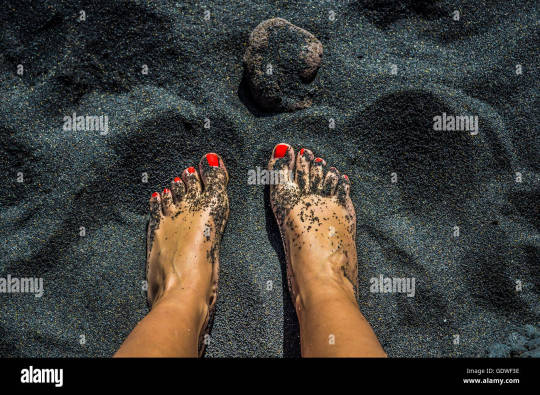
#meditation#black sand#dream#powers#candles#beach#stress#healing#touch#essence#desires#feet#fruit#eat#tongue#water#neurotransmitters#brain#thoughts#eyes#closed#bed#sheets#floor#body#pain#destiny#fantasy#wake
14 notes
·
View notes
Text
Dr. Crane:
Me:
Dr. Crane:
Me:
Dr. Crane: ???
Me: How the fuck did you make a gas cause people to go into PSH
#psychology#neurotransmitters#norepinephrine#fight or flight#psh#arkham asylum#arkham rp#gotham city rp#gotham#gothamite#only in gotham#johnathan crane#dr crane#scarecrow
10 notes
·
View notes
Text
Neurotransmitters Major Functions
Acetylcholine
-- muscle movement
-- attention
-- arousal
-- memory
-- emotion
Dopamine
-- voluntary movement
-- learning
-- memory
-- emotion
Serotonin
-- sleep
-- wakefulness
-- appetite
-- mood
-- aggression
-- impulsivity
-- sensory perception
-- temperature regulation
-- pain suppression
Endorphins
-- pain relief
-- pleasure
Norepinephrine
-- learning
-- memory
-- dreaming
-- emotion
-- stress-related heart rate increase
-- stress-related slow in digestion
#medblr#studyblr#notes#my notes#anatomy and physiology#anatomy#physiology#anatomy notes#physiology notes#medblr notes#studyblr notes#science#science notes#scienceblr#biology#neurology#neurology notes#neurotransmitters
30 notes
·
View notes
Text
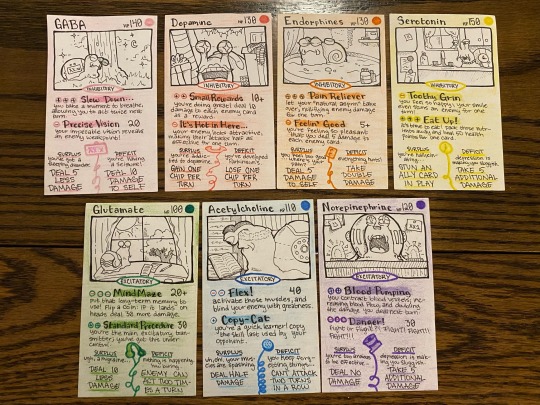
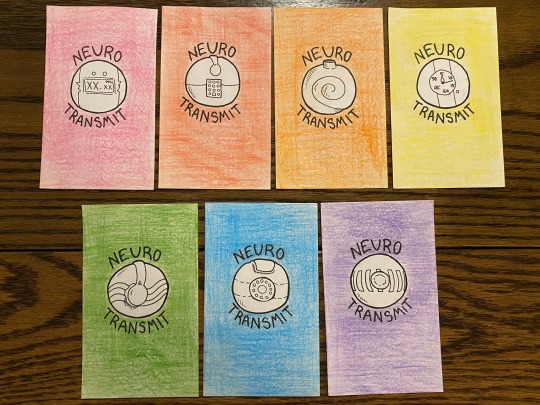
I spent the last couple days making neurotransmitter trading cards for AP Psychology, and finally, they are finished…
We were basically allowed to do whatever as long as we have their names, 2 functions, surplus/deficit effects, type, and a representative picture. I—in my poor one piece brainrotted state—immediately went “i should make them transponder snails” and oh my god were these hard??? Like these guys are so simple but theyre so weird and hard to design at the same time????
Anyways. Heres hoping I get an A.
#i even made rules for these mfs#WHY DO I DO THIS TO MUSELF#MY BACK ACHES SO BAD#aghhh#one piece#transponder snail#neurotransmitters#ap psychology#school project
12 notes
·
View notes
Text

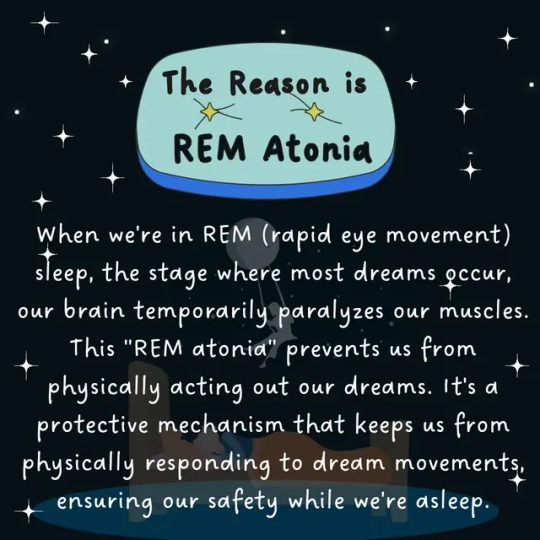


Why do we fly over skyscrapers 🌆 in our dreams but in reality,remain on snooze mode in our bed? 🛌💤This question must have crossed your mind many times before,🤔so happened to us and here's what we found. To unlock more such science treasures ✨, follow this series every Sunday and get your WHYs & HOWs demystified.
#study blog#education#science#science facts#discover#research scientist#i need sleep#dream#biology#zoology#neuroscience#neurobiology#why#scicomm#night#bedroom#physiology#neurotransmitters
18 notes
·
View notes
Text
The Science Behind Great Storytelling

(Photo by Pereanu Sebastian on Unsplash)
Why do you write?
There’s probably no easy, straightforward answer to such a question. Some people write to express themselves, some to share their stories or opinions, some to inspire other people, some to educate, some even find it therapeutic. It’s a question that has both no answer and multiple, complex answers, all at once — we all write different things, for different reasons.
Nonetheless, whatever your why might be, there’s a common denominator among them all: As writers and story-tellers, we aim to transform our why into written words, in order to elicit a certain array of feelings and emotions in our readers.
What we write certainly plays a big role here, but in my humble opinion, how we write it is what makes the difference: The way you describe a murder can make the whole scene go from tragedy to comedy; the way the reader feels about a character depends on the words you use while presenting it; different punctuation can give completely different meanings to the same sentence. In other words, by learning how to write you are able to control what your audience feels while reading your work — this is why learning, experimenting, and practicing are crucial steps towards great writing and story-telling.
No surprises here, right? Everyone knows the more you write, the more you learn, and the more you learn, the better you write. It’s the well-known practice makes perfect cycle that has repeated itself throughout history and, paired with talent, has churned out some of the greatest writers of all time.
So, I could tell you to practice everyday, to read more, or to join a writing course. I could also tell you that Jane Austen’s literary style relies on a combination of parody, burlesque, irony, free indirect speech, and a degree of realism. I could tell you how Hemingway stood out from the crowd thanks to his concise, straightforward, and realistic style. If we wanted to get even more technical, I could also tell you that Shakespeare used a metrical pattern consisting of lines of unrhymed iambic pentameter, called blank verse — in short, I could tell you things you’d find in your English literature book, or things you’ve already been told a million times before.
But that’s not what I’m going to do. Instead, I’ll tell you about the science behind our readers’ emotions, the effect our words have on them while reading, and how to make them work for you:
The science
It’s all about neurotransmitters.
Technically speaking, a neurotransmitter is “a chemical substance which is released at the end of a nerve fibre by the arrival of a nerve impulse and, by diffusing across the synapse or junction, effects the transfer of the impulse to another nerve fibre, a muscle fibre, or some other structure.”
In simple English, neurotransmitters are chemical messengers: To keep it simple, all you really need to know is that external stimuli get them fired up, and according to which one is stimulated, a certain chemical is released inside your body, provoking a certain feeling or emotion.
Unfortunately, since there are way too many different kinds of neurotransmitters, we won’t be able to cover them all here. If you are interested in the topic you can grab yourself a copy of Marco Nigrini’s book “The Brain: A User’s Manual” — reading the book, I came to the conclusion that, when it comes to writing and story-telling, there are three main neurotransmitters that we can exploit: Dopamine, Oxytocin, and Endorphins.
The storytelling
It’s still, all about neurotransmitters.
Dopamine
As Nigrini puts it in his book, “dopamine is the superstar of neurotransmitters”. You have most likely heard about it at some point in your life, and for a good reason. Most people know it as the pleasure and reward hormone, because it plays a major role when it comes to experiencing happiness, our well-being and that rewarding feeling we get after doing certain things — take social media for example: Instagram likes, Facebook messages, and Twitter retweets all stimulate the release of dopamine in our brain, which is why they all become so addictive.
For us, as writers and story-tellers, the addictive properties of dopamine are perfect if we want to keep our readers glued to our work. So the logical question now, would be how do we do it?
Suspense and expectation. These two elements alone are enough to flood your readers’ neural highways with dopamine, and get them hooked to your story — creating shorter sentences, revealing vital information that the characters don’t yet know, and building anticipation, are all simple yet effective ways to accomplish this.
Oxytocin
As writers, specially when it comes to fiction, we want our readers to fall in love with our story and our characters, we want them to bond with us and our work — this is where oxytocin steals the spotlight.
To give you an example of what exactly is this neurotransmitter’s role, imagine a mother and her newborn. As we all know, the bond between the two of them is pretty much unbreakable, but why is this? In part, it’s because of oxytocin — while nursing her newborn, oxytocin is released in large amounts, thus creating a sentiment of generosity and trust between the mother and the baby.
For obvious reasons, we can’t rely on nursing our readers, so we have to stick to the next best thing: In order to stimulate the release of oxytocin in our reader’s brain, we need to create empathic characters or narrate touching stories.
Endorphins
Chocolate and sex both release endorphins — this should give you at least a vague idea of the role they play in our body. To clear up what it is they actually do though, just know that, much like dopamine, these neurotransmitters have a massive impact on your feelings of well-being, and this is what we should take advantage of: If we give our readers a more immersive reading experience, while making them feel more at ease, comfortable, and relaxed (which are all effects that endorphins have on our body), chances are they will enjoy whatever it is we put in front of them.
The good news? Stimulating the release of endorphins in our readers is way easier than you’d think — just make them laugh.
Conclusion? As with every other aspect of life, the way we experience reading massively depends on the way our brain perceives and processes information. If we, as writers, are able to understand the mechanism behind it, we can get one step closer to mastering our craft.
So remember, use science and neurotransmitters to your advantage, and develop your writing according to the feelings and emotions you want your story to elicit in your readers.
#science#writing#article#information#people#neurotransmitters#dopamine#oxytocin#creativity#creator#writer#psychology#write#science backed#endorphins#storytelling#story#telling
7 notes
·
View notes
Text
#chemistry#electrochemistry#graphene#dopamine#sensor#Graphite#Cylcic_voltammetrt#neurotransmitter#neurotransmitters
3 notes
·
View notes
Text
New piece of lore: when your toes go cold your brain trips up and tells you that your socks are wet when you’re literally just freezing with no Hydrogen-oxygen-dos anywhere nearby
2 notes
·
View notes
Text

Lucy Prebble ("Succession", "Suzie", "The Effect")
#lucy prebble#love#neurotransmitters#adrenaline#rebecca mead#billie piper#suzie#the effect#succession#the new yorker#neuroscience#anxiety#thoughts
2 notes
·
View notes
Photo
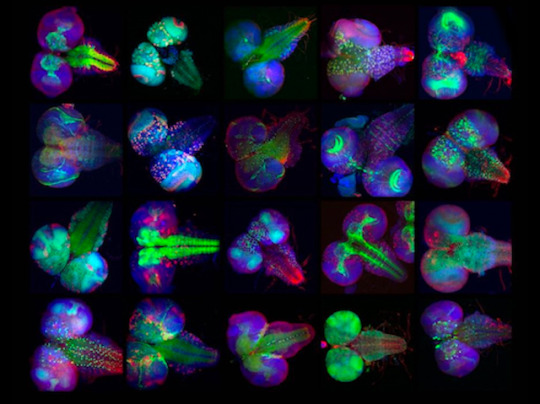
Time Flies
The fruit fly Drosophila shares many genes in common with us – it has fewer, but the processes they define in development are similar, simpler versions of our own with many lessons to share. In these developing Drosophila brains, researchers watch as, under a high-powered microscope, coloured stains highlight proteins in the early nervous system (green), with DNA inside cells in blue. Highlighted in some of the red areas, synapses are the junctions where neurons meet to pass on 'messages' in the form of bursts of chemicals called neurotransmitters. The team investigate how these synapses change over time – their synaptic plasticity – guiding more or less 'traffic' through these junctions. This may be a clue to how memories are formed, maintained and altered over time, for the flies and as we develop and age.
Written by John Ankers
Second place image by Jeff Lee, Ian Davis Lab, Dept of Biochemistry, University of Oxford, Oxford, UK
Image category of the University of Oxford's Department of Biochemistry Centenary Scientific Imaging Competition
Image copyright held by Jeff Lee
Related research published in Journal of Cell Biology, May 2023
You can also follow BPoD on Instagram, Twitter and Facebook
#science#biomedicine#image competition#brain#neuroscience#immunofluorescence#synapses#neurotransmitters#fruit flies#drosophila#collage#sci art
9 notes
·
View notes
